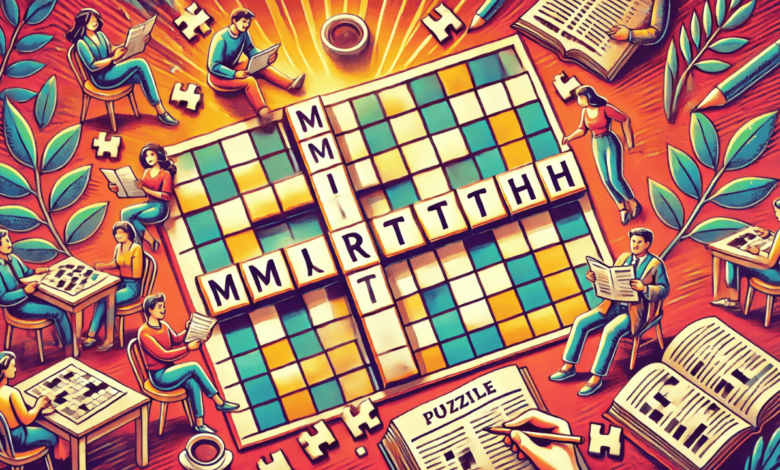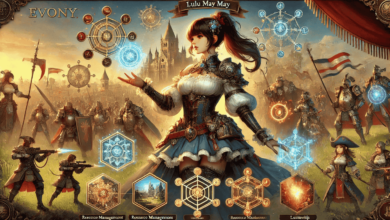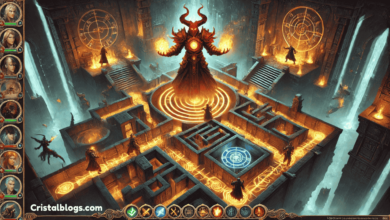Joyous Laughter NYT: A Deep Dive into the Crossword World

Joyous Laughter NYT captures attention as a crossword clue and reflects the creativity and joy of solving puzzles. This article explores the term’s essence, relevance to the New York Times crossword puzzles, and broader impact on enthusiasts.
Understanding the Clue: Joyous Laughter
In the world of crossword puzzles, the clue Joyous Laughter represents a unique intersection of simplicity and thoughtfulness. It first appeared in the New York Times Mini Crossword on June 28, 2024, as a five-letter solution: MIRTH. While concise, this word carries rich connotations of laughter, joy, and communal happiness.
Why “Mirth”?
The term “mirth” is not commonly used in everyday language, but its charm lies in its timeless appeal. It is derived from Old English and encapsulates laughter and happiness in a single syllable. Crossword constructors often choose evocative words to challenge solvers and enrich their vocabulary.
The Appeal of New York Times Crossword Clues
The New York Times crossword is renowned for its clever, nuanced, and often playful clues. A phrase like Joyous Laughter challenges solvers to think beyond straightforward synonyms like “laughter” or “happiness” and delve into less common vocabulary. This elevates the solving experience, transforming it into a mix of mental exercise and linguistic discovery.
The Joy of Solving Crosswords
Crossword puzzles, especially in publications like the New York Times, provide a unique blend of entertainment and cognitive challenge. Clues like Joyous Laughter exemplify the creative artistry behind puzzle construction, encouraging solvers to:
- Expand Their Vocabulary: Learning words like “mirth” enriches one’s lexicon.
- Sharpen Problem-Solving Skills: Identifying synonyms and contextual meanings enhances critical thinking.
- Experience Satisfaction: Successfully solving a clue brings a sense of accomplishment and joy.
Crossword Solving as a Social Activity
Puzzles often bring people together. Whether collaborating on a Sunday edition or discussing tricky clues like Joyous Laughter, the activity fosters camaraderie. This shared pursuit of solutions mirrors the communal joy implied by the word “mirth.”
Exploring the Significance of “Mirth”
The word “mirth” goes beyond being an answer to a crossword clue; it’s a term steeped in history and cultural relevance.
Historical Context
- Literature: Authors like Shakespeare and Dickens frequently used “mirth” to describe scenes of festive joy and communal laughter.
- Etymology: Originating from Old English (“myrğe”), the term has evolved but retained its essence of pleasure and amusement.
Modern Usage
While less common in casual conversation, “mirth” is still employed in literary and formal contexts. It evokes imagery of cheerful gatherings, heartfelt laughter, and shared happiness.
The Role of Crossword Puzzles in Language Preservation
Clues like Joyous Laughter highlight the role of crossword puzzles in preserving and promoting less frequently used words. By challenging solvers to recall or learn terms like “mirth,” puzzles ensure these words remain part of our cultural and linguistic fabric.
Educational Value
- Language Skills: Solving crosswords improves vocabulary and comprehension.
- Cultural Awareness: Many clues draw from historical, literary, or pop culture references, broadening one’s knowledge base.
Tips for Solving NYT Crosswords
For those aspiring to master the art of solving clues like Joyous Laughter, here are some helpful strategies:
- Start with the Easy Clues: Build momentum by solving straightforward entries.
- Expand Your Vocabulary: Regularly read and learn new words to improve your solving skills.
- Think Creatively: NYT clues often involve wordplay or indirect references.
- Collaborate: Solving with friends can provide new perspectives and make the experience more enjoyable.
- Practice Regularly: The more puzzles you answer, the better you’ll become at recognizing patterns and solving techniques.
Crossword Community and Joy
The global crossword community is a testament to the joy puzzles bring to people’s lives. Online forums, social media groups, and events dedicated to crossword solving are spaces where enthusiasts share their love for this hobby. Discussions about specific clues, including Joyous Laughter, highlight the shared delight in unraveling word puzzles.
Crossword Blogs and Resources
Numerous blogs and websites cater to crossword fans, offering solutions, tips, and insights. Sites like NytMiniCrossword.com and Answers.org frequently provide detailed explanations for NYT puzzles, helping solvers understand the nuances of tricky clues.
Conclusion
Joyous Laughter NYT is more than just a crossword clue; it’s a gateway to the rich, rewarding world of puzzles and language. The answer, “mirth,” encapsulates the essence of joy and community, both central to the crossword experience. Whether you’re a seasoned solver or a curious beginner, exploring clues like this can bring a sense of accomplishment and, fittingly, a bit of joyous laughter to your day.
FAQs for Joyous Laughter NYT
What does the crossword clue Joyous Laughter represent in the NYT Mini Crossword?
In the New York Times Mini Crossword on June 28, 2024, the clue Joyous Laughter had a five-letter answer: MIRTH. It signifies laughter and communal joy, encapsulating a timeless sense of happiness.
Why is the word ‘Mirth’ used in crossword puzzles?
“Mirth” is chosen for its evocative and nuanced meaning, which challenges solvers to think beyond common synonyms like “joy” or “happiness.” It enriches vocabulary and adds depth to the solving experience.
How do crossword puzzles like the NYT contribute to language learning?
NYT crosswords introduce less frequently used words, like “mirth,” helping solvers expand their vocabulary, improve comprehension, and learn historical and literary references engagingly.
What makes the New York Times Crossword unique compared to other puzzles?
The NYT Crossword is known for its clever and playful clues, nuanced wordplay, and cultural references, which challenge solvers’ creativity and problem-solving skills and set them apart from simpler puzzles.
How can beginners improve at solving NYT Crossword puzzles?
Beginners can start by solving easy clues first, expanding their vocabulary, thinking creatively, and practicing regularly. Collaborating with friends or using crossword blogs and resources also helps build skills over time.




